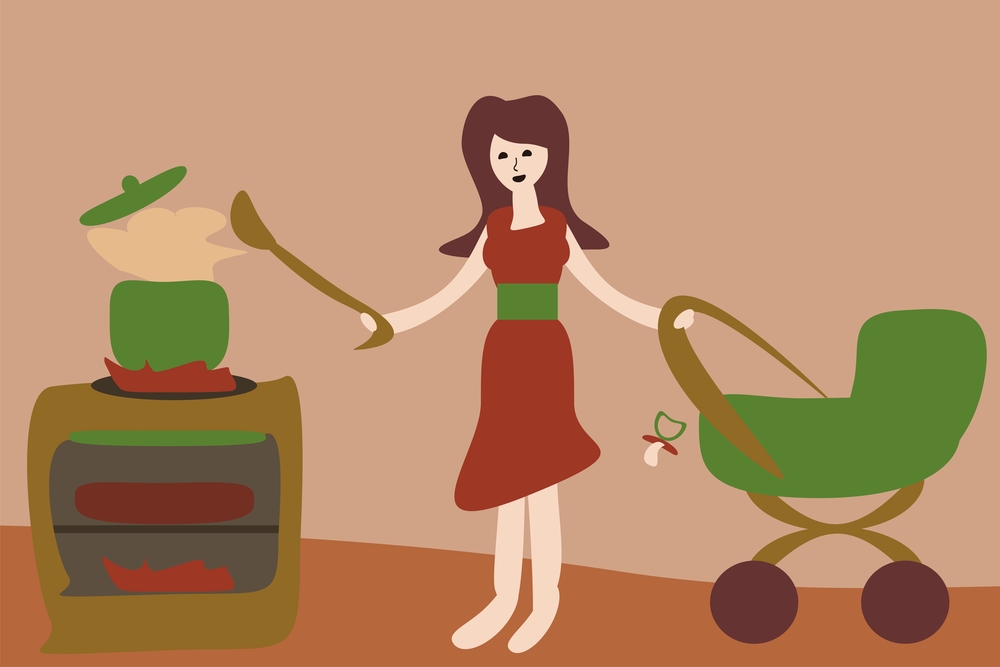Is Baby Reflux Something That Moms Just Have to Live With?
Is Baby Reflux Something That Moms Just Have to Live With?
By Judith I Villarreal
Baby reflux can really put a damper on a mom’s day. Between feedings, naptime, playtime, and bath time, acid reflux in babies can make the already hectic days nearly impossible. New moms especially might find that they’re not sure if there’s anything that can be done about a baby’s reflux. When you find that your baby is uncomfortable due to reflux, keep these 7 helpful tips in mind that can help you and your baby.
Keep your baby in an upright position after feeding
It’s a good idea to hold a baby upright after feedings as it allows gravity to help your baby’s digestion. Some medical experts believe that holding a baby upright and still for at least 30 minutes after a feeding can greatly help keep stomach contents down.
Schedule feeding and naps
Some doctors believe that it’s better to schedule feeding and naps so that there’s time in between each. Putting a baby who suffers from baby reflux down for a nap immediately after a feeding can cause reflux symptoms to appear. Instead, schedule feeding time and naptime so that the baby has time to digest.
Invest in good bottles
If you happen to use bottles, investing in high quality bottles is an option you may wish to consider to help your baby manage reflux. Bottles that are made of a higher quality tend to create less air bubbles, which allow the baby to swallow less air.
Offer feedings and burping more frequently
One way that some moms combat infant reflux is by offering smaller feedings more frequently so that the baby has smaller amounts to digest at a time. In addition to more frequent feedings, burping the baby more frequently can also help babies who have reflux.
Some moms like to thicken milk
Some moms help their babies with digestion by thickening milk with a little bit of baby rice cereal.
A slight incline can help a baby sleep better
Adding a small incline to the head of your baby’s crib can help gravity do its work for baby reflux. Even an incline as small as a pillow under the head can help your baby sleep better at night.
Try an osteopathic treatment
Sometimes osteopathy treatments are a baby’s best bet for helping with reflux. Fully licensed and board certified osteopathic doctors can help to relieve pressure in the baby with cranial osteopathy treatments. Sometimes the problem is an imbalance in the diaphragm or a dysfunction of the esophageal sphincter, which can create tightness in the chest. A medical doctor who specializes in osteopathy can help these conditions by locating the problem areas and repositioning them, which relieves tension and pressure. Some medical experts believe that osteopathic treatments are very safe for babies because they’re gentle, safe, and effective.
If you’d like to learn more about baby reflux and what you can do about it, click here or go to DrMcReynolds.com for more information. Remember to always check with your doctor before taking any medical treatments or remedy.
http://EzineArticles.com/?expert=Judith_I_Villarreal
http://EzineArticles.com/?Is-Baby-Reflux-Something-That-Moms-Just-Have-to-Live-With?&id=9174104
What is reflux?
Reflux, also known as possetting or spitting up, happens when the milk your baby has swallowed comes back up into his food pipe (oesophagus). The full medical term for this is gastro-oesophageal reflux or GOR.
Reflux is just one of the reasons why muslin squares can come in so handy! Both formula-fed and breastfed babies can have reflux.
Your baby’s stomach contains acid that helps him to break down his milk. This mixture of milk and acid can come up and may make your baby uncomfortable. If you’ve ever had heartburn, you’ll know the burning feeling that acid reflux can cause.
Reflux is messy and may be frustrating, but it’s normal for babies and isn’t usually a sign of illness. At least 40 per cent of babies get it, with five per cent of these having six or more episodes a day. Reflux is a temporary problem that usually gets better as your baby’s digestive system matures.
However, a small percentage of babies have troublesome, severe or persistent reflux (gastro-oesophageal reflux disease, or GORD).
What causes reflux?
Your baby’s food pipe (oesophagus) connects his mouth with his stomach. There is a valve, controlled by a ring of muscle, where his food pipe joins his stomach. When your baby eats, the valve opens to allow the milk through, then closes to keep it in his tummy. As this ring of muscle is still developing, it doesn’t always work properly.
This means that when your baby’s tummy is full, milk and acid can come back up the food pipe, causing discomfort.
Bear in mind that your baby’s stomach is still tiny, so he may not be able to have much milk without some of it coming back up. When he’s a newborn, his stomach will only be about the size of a hazelnut. By day three, this will have increased to about the size of a walnut. Even by day 10, it will still only be about the size of a large hen’s egg.
Over time, the muscular valve at the entrance to your baby’s tummy will get stronger. Along with his growing stomach capacity, this means that your baby will grow out of reflux. 90 per cent of babies who have it get better on their own before the end of their first year.
Sometimes, reflux is related to another condition that causes a baby’s digestive system to work more slowly. In these cases, food stays in the stomach for longer. This could be because of a cow’s milk allergy or intolerance. If you think this could be the case, speak to your doctor or health visitor.













